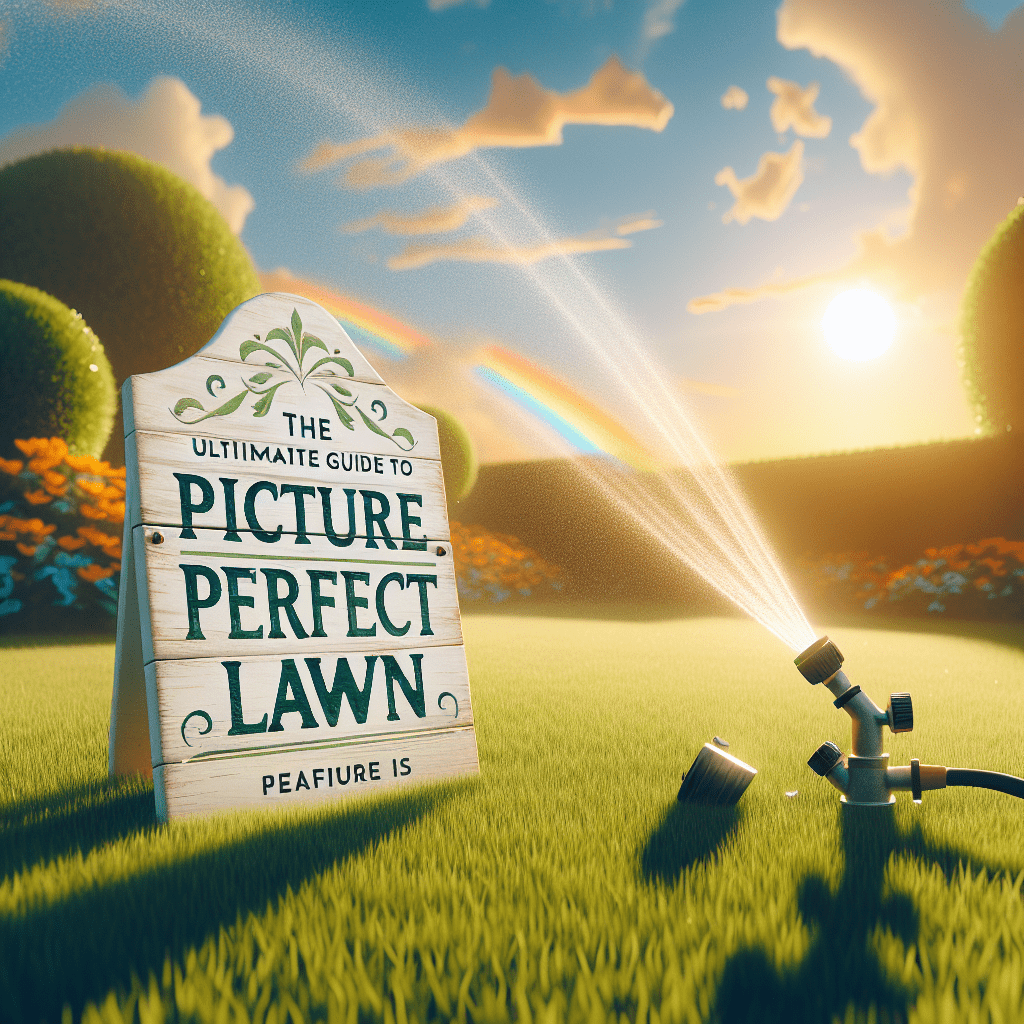Having a picture-perfect lawn is the dream of many homeowners. A beautiful and well-maintained lawn not only enhances the curb appeal of your home but also provides a relaxing space for you and your family to enjoy. Achieving a picture-perfect lawn may seem like a daunting task, but with the right knowledge and tools, it can be easily accomplished. In this ultimate guide, we will provide you with all the information you need to transform your lawn into a green oasis.
1. Start with the Basics
The first step in achieving a picture-perfect lawn is to start with the basics. This includes ensuring that your soil is healthy and fertile, as well as choosing the right type of grass for your climate and soil conditions. Perform a soil test to determine the pH level of your soil and any nutrient deficiencies that may need to be addressed. This will help you choose the right fertilizer and amendments for your lawn.
2. Proper Watering
Proper watering is essential for a healthy and lush lawn. Most grasses require about 1 to 1.5 inches of water per week, either from rainfall or irrigation. Water your lawn deeply and infrequently to encourage deep root growth and drought tolerance. Avoid overwatering, as this can lead to waterlogged soil and promote disease and weed growth.
3. Regular Mowing
Regular mowing is key to maintaining a picture-perfect lawn. Set your mower blades to the proper height for your grass type and mow frequently to promote healthy growth. Avoid cutting more than one-third of the grass blade at a time, as this can stress the grass and leave it vulnerable to pests and diseases.
4. Weed Control
Weeds are the enemy of a picture-perfect lawn. Keep weeds at bay by practicing regular mowing, proper watering, and fertilization. If weeds do appear, spot treat them with a targeted herbicide. Mulching your grass clippings can also help to suppress weed growth and improve the health of your lawn.
5. Fertilization
Fertilizing your lawn is essential for providing the nutrients it needs to thrive. Choose a high-quality lawn fertilizer with the right balance of nitrogen, phosphorus, and potassium for your grass type. Apply fertilizer according to the instructions on the package, usually in early spring and fall for cool-season grasses, and late spring and summer for warm-season grasses.
6. Aeration
Aeration is the process of removing small plugs of soil from your lawn to help improve air, water, and nutrient penetration. This can help to relieve compaction, improve root growth, and enhance overall lawn health. Aerate your lawn once a year, either in the spring or fall, for best results.
7. Overseeding
Overseeding is the process of planting grass seed over an existing lawn to thicken the turf and fill in bare patches. Choose a high-quality grass seed that is appropriate for your climate and soil type, and overseed in the early fall for cool-season grasses, and late spring for warm-season grasses. Be sure to water the newly seeded areas regularly to promote germination and establishment.
8. Pest Control
Pests such as grubs, insects, and diseases can wreak havoc on your lawn if left unchecked. Monitor your lawn regularly for signs of pest damage, such as yellowing grass, brown patches, or chewed leaves. Treat pests with targeted insecticides or fungicides as needed, and practice good lawn maintenance to prevent future infestations.
9. Conclusion
By following the tips outlined in this ultimate guide, you can achieve a picture-perfect lawn that will be the envy of your neighborhood. Remember to start with the basics, including soil testing, proper watering, and regular mowing, and address any issues such as weeds, fertilization, aeration, overseeding, and pest control as needed. With a little time and effort, you can enjoy a lush, green lawn that you can be proud of.
FAQs
Q: How often should I water my lawn?
A: Most grasses require about 1 to 1.5 inches of water per week, either from rainfall or irrigation. Water deeply and infrequently to encourage deep root growth.
Q: When is the best time to aerate my lawn?
A: Aerate your lawn once a year, either in the spring or fall, to improve air, water, and nutrient penetration.
Q: How can I prevent weeds in my lawn?
A: Keep weeds at bay by practicing regular mowing, proper watering, and fertilization. If weeds do appear, spot treat them with a targeted herbicide.
TIP:
Consider hiring a professional lawn care service to help you achieve and maintain a picture-perfect lawn. They have the knowledge, tools, and experience to keep your lawn looking its best year-round.
#Ultimate #Guide #Achieving #PicturePerfect #Lawn
